Guest Post
Social Media: It’s Time Marketers Start 6 Facebook Marketing Strategy

Introduction:
After years of aimlessly chasing fans, it’s time marketers start driving real business results from Facebook. This requires building a Facebook page that has a clear focus and offers value to customers, leveraging the entire Facebook  tool kit, and integrating Facebook into a broader marketing strategy. To accomplish this, interactive marketers must be both an “oracle” who teaches their organization about Facebook and a “gatekeeper” who manages access to the platform. As marketers mature with the social network and Facebook increases its commitment to brands, together they will revolutionize the advertising industry.
tool kit, and integrating Facebook into a broader marketing strategy. To accomplish this, interactive marketers must be both an “oracle” who teaches their organization about Facebook and a “gatekeeper” who manages access to the platform. As marketers mature with the social network and Facebook increases its commitment to brands, together they will revolutionize the advertising industry.
Marketers haven’t cracked the Facebook code:
From toppling governments to inspiring award-winning films to bring long-lost family members together, Facebook is often the center of attention. And marketers are swarming to it like moths to a flame: 96 of the top 100 advertisers now use the site. Yet while millions of people have “liked” brand pages, most marketers fail to derive value from those relationships. In fact, engagement rates on brand pages are declining rather than increasing. The result? Believe it or not, most marketers don’t even see Facebook as their best option to drive audience engagement (see Figure 1). Marketers are failing to use the platform to its full potential because:
- They lack focus. In their race to start a Facebook page, many marketers forgot an integral step: setting clear objectives. Now they’re left with Facebook pages that have no purpose other than collecting “likes.” This lack of objectives not only hurts from a business perspective but also means that fans don’t get any real value from liking the brand.
- They don’t understand the platform. Facebook is unlike any platform marketers have ever seen — it’s like a miniature Internet with its own set of rules. EdgeRank, Facebook’s system for deciding which content appears in the newsfeed, is similar to search engine optimization (SEO) but requires a different kind of optimization. Facebook Ads are a cross between banners and paid search — and don’t quite follow the conventions of either. Marketers struggle not only to understand each of these pieces individually but also how they work together and how they’re evolving.
- They don’t have the right resources in place. Facebook doesn’t cost as much in money as it does in manpower — but many marketing organizations don’t have appropriate manpower in place — the dedicated people or the content development and sharing processes needed to be successful.
- They seek the wrong measurements. Marketers say that measuring return on investment (ROI) is their biggest challenge in social media, and measuring Facebook is no exception. Too many marketers ask “What is the value of a fan?” and not enough marketers understand their fans’ value in terms of loyalty and influence or Facebook’s impact on their business. Marketers won’t be able to prove value until they begin to ask the right questions.
Facebook Hasn’t Made Brands a Priority
Just as marketers have struggled to use Facebook properly, Facebook has struggled to help them succeed. In fact, for a company that relies on advertising revenues, Facebook hasn’t done much to make life easier for advertisers:
- It does not make content management easy. Marketing on Facebook requires a constant flow of content. Yet marketers aren’t set up to be publishers — and Facebook offers only limited options for managing multiple pages or handling multiple languages. Coca-Cola experienced this downside when Portuguese-language content accidentally appeared on its US page, inciting some users to respond with hate speech on a page that promotes happiness.

- It constantly changes the rules without warning. Facebook’s frequent and unilateral policy changes make it difficult for marketers to trust and invest in the platform. Just ask any pharmaceutical company: When Facebook recently removed the ability to disable user comments, it put the pharma companies at direct risk of violating government regulations and ultimately forced many to shutter their Facebook pages.
- It offers marketers limited data. Facebook is one of the only major websites that doesn’t allow third-party ad tags. Not only does that force marketers to rely on Facebook-provided data that one social analytics executive described as “lightweight,” but it means marketers can’t compare Facebook campaigns with other channels like search and banners or include them in attribution analysis. Without reliable, comparable data, brands can’t determine how important Facebook really is to their marketing mix.
Follow 4 Steps to Make Your Facebook Marketing Work:
Collecting fans without purpose isn’t enough; marketers must get serious about driving business results from Facebook. To do so, take four steps that will help you squeeze all of the possible value out of your Facebook program:
- Set clear objectives. If you don’t know what you want to achieve, you probably won’t achieve much at all. Define objectives that provide real value to your business.
- Build a page that provides value for your fans. Bring focus to your Facebook marketing by building a brand page that not only accomplishes your business objectives but also gives fans a reason to continually engage the brand.
- Use the full Facebook tool kit to increase reach and engagement. A brand page shouldn’t sit on its own. It’s imperative that you combine features such as ads, events, and apps along with your brand page to get the most out of the network.
- Integrate Facebook into your marketing mix. Facebook is not an island. It’s as important to integrate it with the rest of your marketing as with any other medium.
Set Clear Objectives
Start by rethinking what your Facebook page is going to accomplish for your business. Facebook’s versatility lets you choose from objectives that span almost every part of the marketing mix, including:
- Generating word of mouth. Facebook’s mission is to “give people the power to share” — and it has succeeded spectacularly. Over 4 billion “things” are shared every day, often related to products and brands. Facebook is the No. 1 site where consumers see social content about products and services, well ahead of any other social network. And according to Forrester’s Tech Marketing Navigator, the word of mouth generated on social networks plays a growing role in the purchase path for consumer technology products (see Figure 2).

- Driving people down the sales funnel. While it’s unlikely to replace dedicated direct marketing channels like Google AdWords, Facebook can drive some forms of direct response. John Deere uses Facebook content to tempt its half-million fans into a lead-generation site and reports that Facebook drives leads at a rate comparable to direct mail.

- Increasing loyalty. Facebook offers marketers a new way to engage their most loyal customers — and to get them to spread marketing messages. For instance, Tasti D-Lite allows fans to link their TastiRewards accounts to Facebook. Then every time they make a purchase, a customizable message is posted on their Facebook page.

- Helping your peers in product development or eBusiness. Savvy consumer product professionals are tapping Facebook for new ideas and to create new functionality. Starbucks created an application that allowed people to create their own Frappuccino online and then share with friends on Facebook. And Facebook has the potential to drive shared purchases. For instance, LiveNation’s Ticketmaster has integrated Facebook’s social graph into its interactive seating chart, allowing people to see where their friends are sitting and buy seats nearby.
Build a Page That Provides Value for Your Fans
Today’s brand pages are littered with a random mix of company news, promotions, advertising, and other content focused on what marketers want rather than what fans want. Carolyn Everson, VP of global marketing solutions at Facebook, says that the brands that succeed on Facebook are “the ones that give people a reason to be fans.” To provide value to the fans you should:
- Learn who your fans are and what they want. Facebook doesn’t provide much data on your fans, but there are ways of getting more information through opt-ins. EMI worked with campaign management platform Neolane to develop a Facebook app that collected opt-in customer information and then integrated it back into EMI’s customer database. Knowing who your fans are can help you determine not only how valuable they are as customers and influentials, but also what kind of content and engagement they’re looking for.
- Use Facebook data to dynamically optimize your content plan. While Facebook data is limited, dig through what’s available to learn how your community is responding to your posts. PageLever — an analytics tool that specializes in optimizing brand pages based on available Facebook data — pulls near real-time data from Facebook’s application
- programming interface (API) to help companies learn what content types are performing the best, which demographics are responding, and what time of day is optimal for posting. This data can then be used to create a dynamic content plan that gets the best response out of the community at any given point in time.
- Use apps to create a richer experience. A “like” allows fans to read and comment on your posts, but to create deeper engagement like games and contests you’ll need an application. For Valentine’s Day 2011, Target ran a contest called “The Super Love Sender” that let people vote on which charity would receive $1 million from the brand. Target’s Facebook app allowed fans to send friends personalized valentines and get real-time updates on which charity was in the lead.
- Keep your community active — even in down cycles. Your Facebook page is not a campaign, it’s a community of people who have raised their hands as brand advocates. As Scott Weisbrod, VP of strategy at Blast Radius told us, “Facebook allows for a more meaningful relationship than search or email. It’s important to build a content plan and calendar not only for your big campaign pushes but also during the down cycles when you’re not doing campaigns.”
Integrate Facebook into Your Marketing Mix
Facebook is too often treated as an isolated asset rather than an integrated part of the marketing mix — creating inconsistency in both the marketing plan and with the end-user. To integrate it interactive marketers should:
- Incorporate Facebook’s social graph into your existing web properties. Facebook makes it easy for you to bring its massive sharing network to your website, creating additional reach and interaction with your content and experiences. Toymaker Step2 built a Facebook Connect login into its site so customers could repost their product reviews on Facebook as well. The results: The amount of traffic it got from Facebook grew 135%, and the revenue from that traffic grew 300%.
- Make Facebook promotions the foundation of broader campaigns. Chances are that your broader campaigns will create at least some conversation on Facebook; by making Facebook the center of that campaign you can incite both conversation and participation. Corona’s “the most liked beer in America” campaign featured the faces of its Facebook fans on a billboard in Times Square — both creating reach (signs in Times Square typically get 1.5 million impressions per day) and driving 200,000 new “likes” for the brand.
- Use Facebook data to make other marketing programs more effective. While Facebook makes it hard to learn who your users are, it’s relatively easy to track their actions — and use that information to improve the rest of your marketing programs. For instance, customer relationship management (CRM) vendor Merkle can connect Facebook fans to existing CRM data. And marketers should work with vendors like DataXu, a demand-side media buying company, which now includes data from Facebook campaigns in its display media optimization algorithms.
The leading performance media platform for agencies, Social Media Marketing Services helps agency marketers buy, track, manage, optimize, retarget, and report on media across all channels—including search, display, and social media.
Dynamic Buzz provides the social media management for agencies buying ads on any online channel, helping them handle all tasks associated with performance advertising within an integrated platform.
Guest Post
10 Steps to Evaluating and Measuring Your Marketing Strategy

When you are trying to market a product, the product or service is only as good as the potential clientele think it is. You need to get them to buy or use the item or service before you can tell if it really works for them. How can you go about evaluating and measuring your current marketing strategy?
Input vs. Output
Check your financial statements. Are you spending more money than you are making? In a strong marketing campaign, this should not be the case. You want to tweak your plan to make more money than you are putting into the project.
Customer Surveys
When you sell a product, include a survey along with it. Ask the customer to rate different qualities of the product that directly relate to the market. For example, ask them how they heard about the product and if the visual appeal of the item had anything to do with its purchase.
Phone Surveys
Distribute flyers, pamphlets and other coupon offers to people and see if they call back. You’ll know if the marketing works based upon how many people call. When they do call, ask what elements of the flyer or other item made them want to call you.
Test Group
Before you send a new item onto the market, have a test group to evaluate your marketing. For example, you might bring in a section of the company that has never seen the ad. Ask them what they think and if they would buy the product.
Introspective Analysis
What about you? Try to separate yourself from the ad as much as possible. Imagine that you were walking down the street and saw this advertisement. Would you feel inclined to purchase it or use the service? What elements of it are captivating and visually appealing? What elements turn you away?
Quantitative Data
Of course, all of these surveys and questions are important; however, you must generate quantitative data from all of them. For example, calculate the percentage of people who learned about your company from the Internet, paper flyers, word of mouth, and so forth. Put the information into charts.
Compare Years
After you have put the information into charts, you should start comparing this year’s findings to last year’s findings. If you find that a larger percentage of people are using the Internet than last year, you will have gained valuable insight into the company’s advertising.
Targeting the Many…
Once you find where most of your patrons are coming from, work to keep up steady advertisements in that domain. If most people are finding your company through Google searches, maintain fresh SEO strategies throughout the year to keep generating customers in that manner.
…And the Few
Let’s say that very few people are finding you from paper advertisements in the local department store. If this is a new trend, give it another shot to try to keep those few customers that you have. If it’s a continuing trend, you may want to put that money into another avenue.
Keep It Up
Don’t let your evaluation and measuring strategies fall to the wayside. You need to keep using them to ensure constant success for your company.
Evaluation and measurement strategies can bring both good and bad news to you about your marketing strategy. Be sure to use all of the information to generate more positive outcomes.
Thaddeus McGregor writes about business, marketing & finance at
www.businessinsurance.org.
Guest Post
6 Best Online Plagiarism Checkers to Detect Duplicated Content
This post discusses the importance of detecting and removing plagiarized content for credibility, originality, avoiding penalties, and academic competence. It suggests using a plagiarism checker while writing, highlighting six best online plagiarism checkers: Prepostseo.com, EduBirdie’s, Writer.Com’s, Check-plagiarism.com, Plagiarisma.Net, and Bibme.Org. The article also gives a step-by-step guide for detecting and removing plagiarism from content. Some side recommendations include Grammarly, SemRush, and Invideo, among others.

Using a tool is one of the first steps in removing plagiarism. In a time when around 1.5 billion pages on the internet have duplicate content, writers must formulate something original and outstanding.
That’s when a plagiarism detector comes in handy, as they can help the writers by:
- Finding plagiarism’s percentage
- Detecting duplicity by scanning vast databases
- Analyze similarities/compare duplicate content
- Check for originality after removing or rephrasing plagiarized content
These factors make a plagiarism checker necessary in any writer’s arsenal today. However, that’s where the challenge begins: finding a free plagiarism checker. So, to help you find such plagiarism finders.
Defining the Necessity of Detecting & Removing Plagiarized Content
Finding and removing plagiarism is an essential practice that every writer must learn. It’s not only about your credibility; it’s also about the purpose you’re writing for. For instance, if you’re writing in a professional setting, the image of your workplace depends on it.
Suppose you’re writing content in an academic environment. In that case, your grades and future hang on your ability to write original content. Sometimes, plagiarism can be accidental, but that doesn’t make it less harmful.
That’s why it’s crucial for any writer today to use such tools to remove plagiarism. And here are four primary reasons that signify the importance of finding and eliminating plagiarism:
· Promote Original Ideas
Originality is the key in any setting, whether it’s academic or professional. Any plagiarism in the content will make it unoriginal or lackluster. That’s why you must find duplicity and remove it accordingly to promote original ideas and stand out as a good writer.
· Establish Credibility
Credibility as a writer depends greatly on how well you write original content. Therefore, regardless of the purpose of your writing, you need to establish your credibility as a proficient writer by removing plagiarism. This will grant you a vote of confidence in any situation that you write.
· Avoid Google Penalties
As a blog writer or website owner, your job is to stand out in the SERP ranks by creating SEO-friendly content. The fact remains that no SEO-friendly content can ever have plagiarism in it. Therefore, removing plagiarism for better SEO is important for any website or blog.
· Academic Competence
To advance in grades and overall academic venture, you must write content that helps you establish your expertise and competence. Suppose your research papers or essays have copied content in them. In that case, you will be compromising your academic competence, so you must remove plagiarism from it.
6 Best Online Plagiarism Checkers to Detect Duplicated Content
You can find them all on Google, from outstanding plagiarism finders to some that might miss duplicity. Therefore, it’s no surprise people look up to experts to find tools that help them with this necessary factor of content writing.
We’ve picked a list of tried and tested tools to make it easier for you. These tools are both paid and free. So, without further ado, here are the six best online plagiarism checkers to detect duplicated content.
1. Prepostseo.com
For good reasons, PrePostSEO is one of the common names in such tools. The plagiarism checker by this provider testifies to their position as one of the best toolmakers today. This plagiarism finder finds duplicity effectively and leaves no stone unturned when looking for plagiarism.
In other words, this visually appealing content scanner allows you to scour through the depths of the internet to find duplicity. Therefore, you can depend on it to find any plagiarism in your content and its sources.
2. EduBirdie’s
EduBirdie’s plagiarism checker is for content writers, students, teachers, etc. You see this line right after you visit the tool, and there’s no doubt about it. The checker doesn’t offer many options except its ability to check up to ten thousand words.
This makes it a checker with some of the most word-checking abilities. Therefore, regardless of your content’s length, you can rest easy knowing you can check any form of content with this plagiarism finder.
3. Writer.Com’s
You would think a website named “Writer.com” would provide you with a great tool, and they do. The plagiarism checker by writer.com is nothing short of stellar and easy. Dubbed as a “free plagiarism checker,” this one doesn’t ask you a penny.
These factors make it perhaps one of the most lucrative plagiarism finders available today. On top of that, it works quickly, so you won’t have to wait a lot before it scans your content.
4. Check-plagiarism.com
Check-plagiarism.com’s plagiarism checker is perhaps the best tool on this list, not only because of its ability to check plagiarism but also because it can do it in multiple languages. Therefore, regardless of the language you write your content in, you can use it to find duplicity.
The seemingly endless word limit will also put you at ease since you can quickly check any long-form content. However, what impresses us the most is the speed at which this tool operates. In other words, even thousands of words can be scanned with this tool within seconds.
5. Plagiarisma.Net
Plagiarisma.net is one of the tools with the most supported languages. The website itself claims to support over 190 languages. Moreover, this plagiarism finder offers two options in a unique turn of things. These options allow you to check for plagiarism on either Google or Bing.
We’re unsure how effective that is, but it’s a unique approach. Since Google and Bing have very different methods, it could mean finding plagiarism on an extensive level. Regardless, it doesn’t influence the effectiveness of this plagiarism finder.
6. Bibme.Org’s
Bibme.Org steps forth with its easy yet convenient plagiarism finder. Now, this one is targeted toward students and teachers. However, bloggers and other writers can use it all the same—since it employs search engines to find duplicity.
You can also upload your files from your computer or import them directly from Google Drive. But, as the homepage implies, it does use the same algorithms and approach as Turnitin.
How To Detect & Remove Plagiarism
Now that you have the tools to find plagiarism in your content, you must learn how to remove it. Therefore, here is a four-step process for your convenience:
· Use Any of The Tools
So far, the tools we’ve discussed have all their remarkable traits. Therefore, pick the best one that suits your content’s length and scan your writing for plagiarism.
· Analyze Plagiarism’s Percentage
Once the tool has analyzed the content, let it finalize the plagiarism percentage in your content. This will help you understand how much of your content is original and how much you need to rewrite. If your content has less than 10% of plagiarism, then that’s good news.
· Rewrite
Now that you’ve picked apart the duplicate content, you must rewrite it. Remember that you need to rewrite to cite the source—which the tools would help you find.
· Check Again
Now that you have rewritten your content, it’s time that you scan your content for plagiarism again. This will guarantee that your content has no plagiarism or duplicity.
Conclusion
In this post, we looked at six tools that you can use to check for plagiarism in your work. All of them are free, and you can pick whichever one suits your needs.
Before wrapping up, we also looked at some steps that you can follow to detect and remove plagiarism from your content.
Another tool that is not listed and is probably the most widely used is Grammarly.
And some other tools that may interest you. These are affiliate links some I use, some I don’t, so before using, please investigate thoroughly SemRush, Invideo, Squirly Products like Squirly SEO, Gravity Forms, Wpforms, OptinMonster, Buy Website Traffic, AI-powered Marketing, Press Release Distribution Made Easy, Track and Protect your Online Marketing, #1 Press Release Distribution Service, Email lists and Distribution Tech, Placeit Envato, Monster Insights, SmashBallon, Icegram, HubSpot, WPwebHost, ConvertKit, Rytr, Canva, QuillBot, Shortly AI, Market Muse, Content Studio, Social Pilot, Strinkingly, CircleBoom, TailWind, Hotjar, The Hoth, Linkilo, CleanMail, HexoWatch, NetPeak, SerpStat, SiteChecker, SproutSocial, WeVideo, Social Dog, EzMob, Sign Now, Tidio, WP Data Tables, Copymatic, HeyGen, Synthesia, Fliki, ElevenLabs, ADcopy, Beehiiv, EduBirdie.
Guest Post
Top 8 popular WordPress plugins of all the time
The WordPress plugin repository has over 54,000 plugins that enhance user experience by filling gaps in WordPress’s core functionality. Eight prominent plugins include Yoast SEO for optimizing SEO and readability, Akismet for spam filtration, Jetpack for multiple functionalities, WooCommerce for e-commerce, WPForms for form creation, WP Rocket for speeding up page load times, Elementor for complex designs without coding, and Migrate Guru for WordPress migration. They contribute to the website’s security, user-friendliness, and speed.

The WordPress plugin repository has 54,000+ plugins. That’s like a lot. These plugins are used to complement the core WP installation. In other words, it improves a user’s experience on WordPress. They handle certain features and functionalities that WP cannot do by itself.
Choosing the correct plugin is vital for your website’s security, user-friendliness, and speed. Else you can take WordPress support from a good team.
We have listed down the top 8 popular WordPress plugins. Let’s discuss first what WP Plugin is.
WordPress Plugin
WP plugin is defined as a software tool that is scripted in the PHP language. It includes additional features on your WP website. The plugin provides a simple process to add features to your website without writing a single code.
The API of the plugin provides an effective hooks’ and filters set. This robust set enables developers to modify or add new functions with WordPress.
8 Popular WordPress plugins
Search Engine Optimization is necessary to boost traffic to your website. Without any doubt, Yoast SEO is the best WordPress SEO plugin. It supports you to add Meta tags, connect your website with Google Search Console, etc.
The plugins provide you with a complete solution to improve on-page SEO. The features of Yoast SEO are as follows:
- Readability check
- Internal linking suggestion
- Access to create custom Description/Mets Header
- XML News Sitemaps
- Quickly build 301 directs with the Redirect feature
- Optimize for synonyms, keywords
- Update as per Google’s algorithm
The plugin makes sure that your site meets the top-most SEO principle. It provides the tools to optimize your content for overall readability and SEO.
Every day it is not easy to filter out spam that is either irrelevant stories or promotional links. Automattic developed a tool called Akismet.
It is known as the godfather of comment spam reduction plugins. The plugin works great to track back spam and filter out most comments. It reviews all your contact form submissions against their global spam database. This WordPress Premium plugin provides advanced security solutions along with spam protection.
To use the plugin, you will need an API key that is free for non-commercial use. It is beneficial if you receive at least ten comments daily.
The Automattic company built another top-most WordPress plugin called Jetpack. It is a versatile tool with numerous features. The plugin supports you with design, marketing, and security. Among its multiple features, you can perform the following-
- Spam filtration
- Malware scanning
- Find site analytics
- Login security
- CDN
- Automatic social media posting
- Slow image loading
- Multiple WordPress themes and more.
How can we miss WooCommerce among the list of popular WordPress plugins? An e-commerce plugin enables you to sell anything on the web simply.
The plugin has an abundance of themes, easy customization options, and much more. Therefore, it stands unique among the list of WordPress plugins.
Wondering why WooCommerce is best for you? The plugin provides features such as adding product variation, extensive payment methods, etc. The developer community creates extensions to make online selling as smooth as possible.
WPForms
WPForms is a fantastic plugin that allows people to create popular forms with simple and easy steps. The form is created by using a simple interface of drag-and-drop. This plugin enables you to create contact, subscription, payment, survey, and other forms. It doesn’t require you to put in a great effort, as you can create forms with just a few clicks.
Note that this plugin can integrate with all the primary payment and marketing platforms.
Every business requires quick page load times and to accomplish this caching solution is the most effective way. The WordPress repository has a Premium caching plugin called WP Rocket. It helps to escalate the loading time of a site. The plugin works with the cached copies and reduces the servers’ workload. It also aids in lowering the HTML, JavaScript, and CSS file weight through minimization. The features of the plugin include-
- Compatible with cloud flare
- Improve user-end browser caching
- Quick Load images while scrolling down
- Support WordPress Multi website
- Incorporate caching solution along with a CDN
- Load images on request
- Facilitate slow loading to boost page load time.
Page builder aids you in creating more complex designs as you don’t need to use coding. The most popular page builder plugin as per WordPress.org is Elementor. The plugin has quickly shot up the rank with over 1.2 million active installs. It offers a free package to build complex designs with a drag-and-drop interface.
You must think of installing this plugin on your website. This will support you to have full control over your design.
Migrate Guru is a specifically designed, fully automated plugin for WP migration. It offers you the fastest, easiest, and most reliable method to migrate your WordPress website. The plugin runs on an external server named BlogVault’s server. You can quickly transfer large sites without any issues.
There is a choice to save the migration setting and remove the unnecessary files during the migration process. This allows you to repeat the migration with a single click in the future.
The plugin has the following feature:
- No overload on the website
- No requirement for storage space
- Easy to use
- Build for large websites
- One-click migration
- Fully automatic, replace & built-in-search
Large images slow down the loading of websites. Therefore, it is crucial to optimize every file image to improve speed. Optimizing every image manually can be a tedious task.
For this, you can apply the Smush plugin. It is a simple way to compress and optimize your WP website images. The plugin compresses images all over your website automatically. You will need to upload images to your WP website media folder.
The plugin provides no interruption in your workflow and improves website performance.
Conclusion
A WordPress plugin helps you to quickly and smoothly run your website. It improves user experience and supports websites to reach a wider audience.
No need to get confused about which plugin is best for your website. We have mentioned 8 of the pre-eminent WP plugins of all time. These plugins are accessible in free as well as paid forms.
Author’s Bio
Jinny Sarah Jacob is a Sr. Technical content writer at 24×7 WP Support, a leading WordPress development company that supports WordPress themes, plugins, and errors. She is a passionate technology geek and loves to write blogs on marketing, technology, B2B, big data/analytics, business strategizing, etc.
-
Tips & Tricks4 months ago
WordPress Security Hacks
-

 Pages6 months ago
Pages6 months agoWrite For Us – Guest Post
-
Showcase2 months ago
StylizedWeb.com
-
News6 months ago
How to: Show/Hide any div box with jQuery in WordPress
-
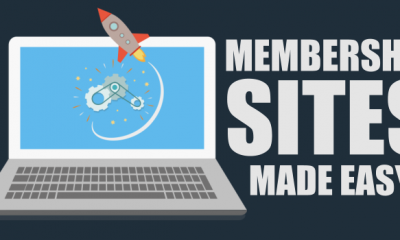
 Plugins3 months ago
Plugins3 months agoTop Membership plugins
-
Tips & Tricks6 months ago
Remove the title attribute using jQuery
-
Guest Post3 months ago
The Top 10 Best Free Android Retro Games of all time
-
Tips & Tricks3 months ago
How to: show/hide a widget in WordPress with jQuery

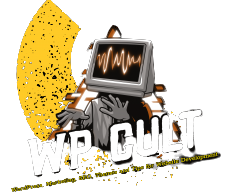


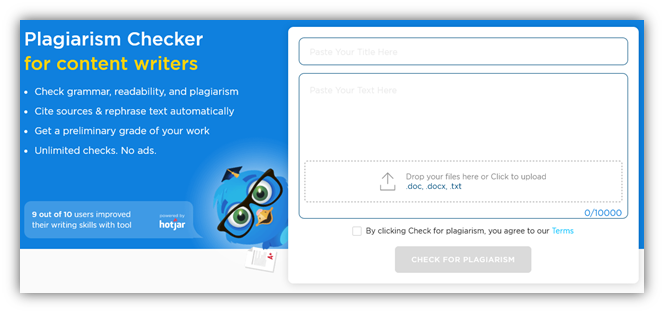
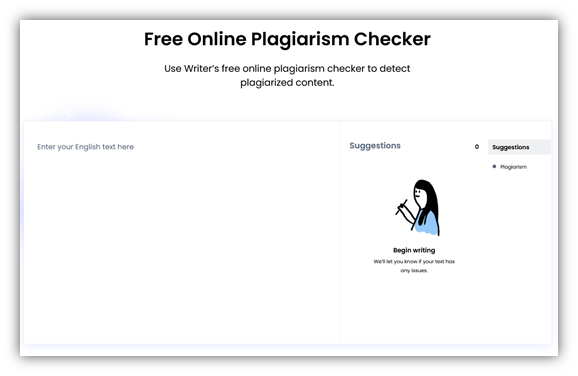
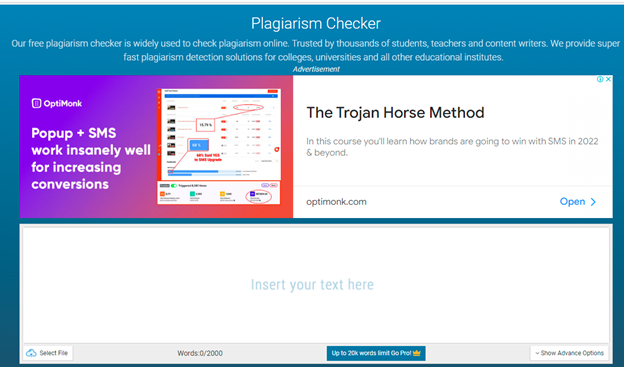



You must be logged in to post a comment Login